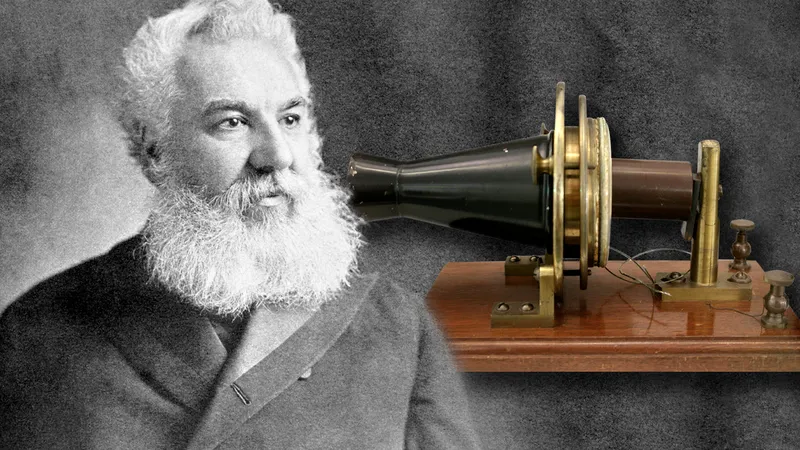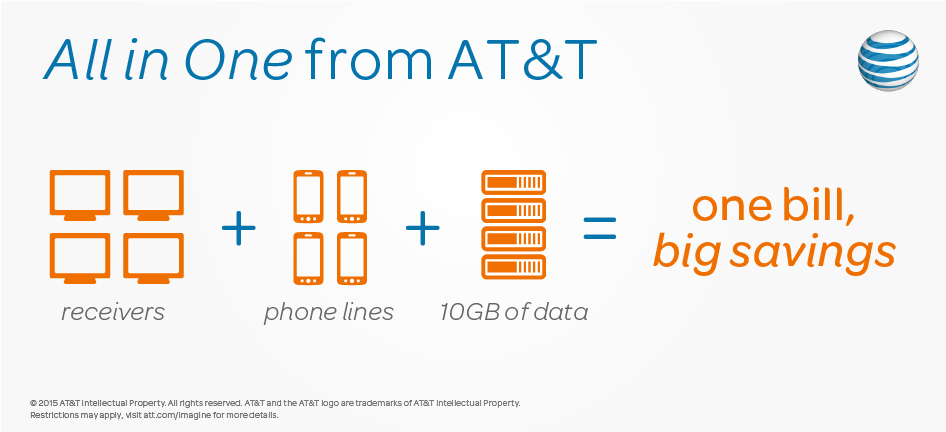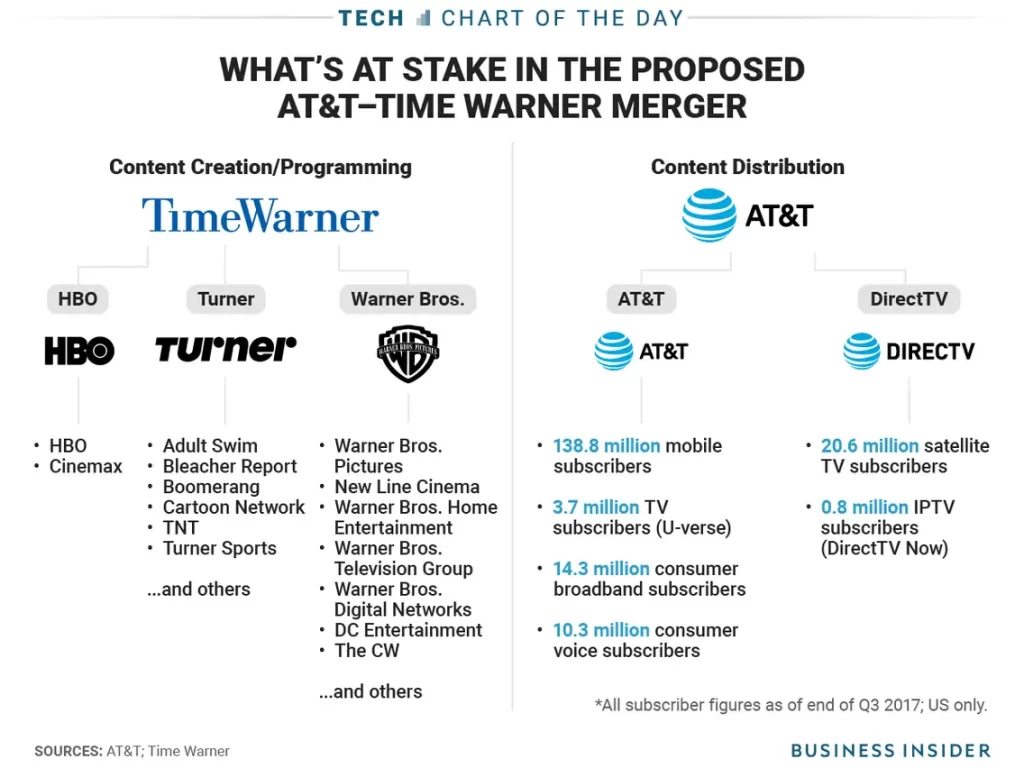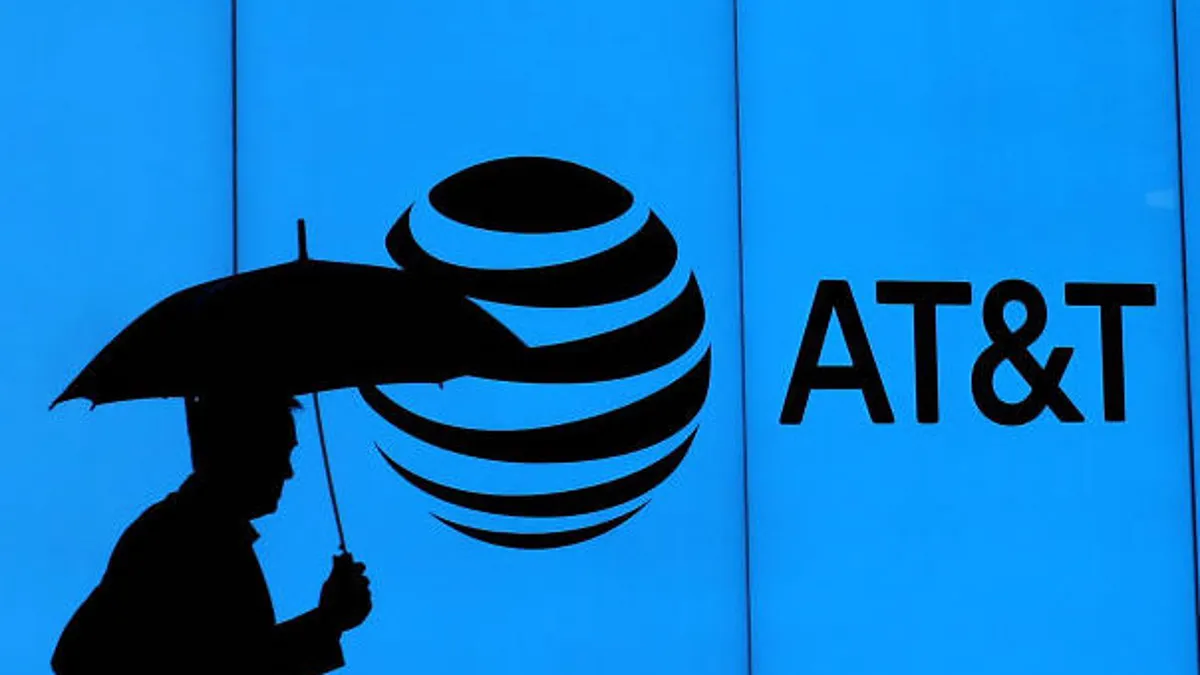AT&T, a global telecommunications giant, stands as a true pioneer in the realm of connectivity and communication. With a history spanning over a century, AT&T has consistently redefined how people and businesses connect, communicate, and collaborate. Established in 1885 by Alexander Graham Bell, the inventor of the telephone, AT&T’s legacy is deeply intertwined with the evolution of communication technology itself. From its humble beginnings as the American Telephone and Telegraph Company, the brand has grown into an iconic name synonymous with innovation, reliability, and transformative services. In this article, we’ll explore Marketing Strategies of AT&T – world’s leading telecommunications and entertainment company.
AT&T Inc. is an American multinational telecommunications holding company headquartered at Whitacre Tower in Downtown Dallas, Texas. It is the world’s third-largest telecommunications company by revenue and the largest provider of mobile telephone services in the U.S. As of 2023, AT&T was ranked 13th on the Fortune 500 rankings of the largest United States corporations, with revenues of $120.7 billion.
AT&T has a long and storied history. It was founded in 1876 by Alexander Graham Bell, the inventor of the telephone. AT&T quickly became the dominant telecommunications company in the United States, and it maintained a monopoly on the industry for most of the 20th century.

In 1984, AT&T was forced to break up by the federal government. This led to the creation of several new telecommunications companies, including AT&T Corporation, which retained the AT&T brand name.
In the years since the breakup, AT&T has undergone a number of changes. It has acquired several other telecommunications companies, including BellSouth, Cingular Wireless, and DirecTV. It has also expanded its business into new areas, such as internet service and cloud computing.
Today, AT&T is a major player in the global telecommunications industry. It provides a wide range of services to businesses and consumers, including wireless, wireline, internet, and television services. AT&T is also a major player in the media industry, and it owns a number of television and film production companies.
The Historical Evolution of AT&T
Early Years and the Birth of Telephony: AT&T’s roots trace back to its founding in 1885 as the American Telephone and Telegraph Company, established by Alexander Graham Bell’s invention of the telephone in 1876. Originally, the company held a monopoly on telephone service in the United States, and it played a pivotal role in developing and standardizing telephone technology. The company’s focus on research and innovation set the stage for its future dominance in the telecommunications industry.
Monopoly and Breakup: Throughout the late 19th and early 20th centuries, AT&T’s influence expanded as it acquired various telephone companies across the nation. By the early 20th century, AT&T had established a virtual monopoly over telephone services in the United States. However, concerns about its monopoly power led to the landmark antitrust lawsuit, United States v. AT&T, which culminated in the 1984 divestiture of AT&T into multiple regional Bell operating companies (RBOCs) and the AT&T Corporation.
Divestiture and Innovation: The divestiture marked a significant turning point for AT&T. The company that emerged retained its long-distance telephone services and research arm, Bell Labs. This period saw AT&T diversifying its offerings beyond traditional telephony. Bell Labs became a breeding ground for innovation, contributing to breakthroughs in telecommunications, including the development of digital switching systems and advancements in fiber-optic technology.
Entry into the Cellular Era: AT&T’s innovation continued into the 1980s, as it played a pivotal role in launching the first commercial cellular network in 1983. This marked the beginning of the mobile communications revolution, transforming how people communicated and paving the way for the modern smartphone era.
Expansion and Mergers: The late 1990s and early 2000s saw AT&T’s resurgence as it expanded its services and reach. It acquired various companies, including cable television providers like TCI and MediaOne, entering the realm of broadband and cable services. Additionally, AT&T’s wireless division, formerly known as Cingular Wireless, underwent a rebranding to AT&T Mobility in 2007, solidifying the company’s presence in the mobile market.
Convergence and Digital Transformation: AT&T’s pursuit of convergence and digital transformation became evident in its acquisition of DirecTV in 2015, expanding its offerings to include satellite television. In 2018, the company made a significant move into the entertainment industry with the acquisition of Time Warner, subsequently renamed WarnerMedia. This strategic move aimed to capitalize on the synergy between content creation and distribution, highlighting AT&T’s evolving role as an integrated telecommunications and media conglomerate.
Continued Innovation and 5G Leadership: AT&T remains at the forefront of technological innovation, particularly in the realm of 5G. The company’s investments in building out its 5G network have positioned it as a leader in the race to deploy next-generation wireless technology. The increased speeds and capabilities of 5G have the potential to revolutionize industries and enable new applications across sectors like healthcare, transportation, and manufacturing.
Today, AT&T’s global presence extends beyond the United States, with operations and partnerships around the world. The company’s commitment to connectivity, innovation, and social responsibility continues to shape its trajectory. AT&T’s legacy as a telecommunication pioneer, its ability to adapt to changing technological landscapes, and its dedication to societal progress all contribute to its ongoing prominence in the telecommunications industry.
In tracing the historical evolution of AT&T, it becomes evident that the company’s journey reflects not only the advancements in communication technology but also the broader societal shifts driven by connectivity and innovation. From its origins in telephony to its status as a global telecommunications giant, AT&T’s story underscores the power of vision, adaptation, and determination in shaping the future of communication.
Marketing Strategies of AT&T
AT&T has crafted a wide array of marketing strategies to connect with consumers, promote its services, and maintain its position as a pioneering brand. These strategies span traditional advertising, digital campaigns, customer engagement initiatives, and corporate responsibility efforts. Let’s delve into the details of AT&T’s marketing approach:
Brand Identity and Positioning:
AT&T has developed a strong brand identity centered around connectivity, innovation, and reliability. The company positions itself as a technology leader, emphasizing its role in driving the evolution of communication.
Brand Identity:
AT&T has established itself as one of the largest telecommunications companies in the world. Its brand identity reflects reliability, innovation, and customer satisfaction. AT&T positions itself as a trusted provider of communication services that enable customers to connect with each other seamlessly across different devices and platforms.
The company uses its iconic logo featuring the globe and stripes to reinforce its global presence and commitment to providing high-quality service to customers around the world. Additionally, AT&T emphasizes its focus on technology and innovation by showcasing its advancements in areas such as 5G networks, IoT solutions, and digital media services.

Positioning Strategy:
AT&T positions itself as a premium provider of integrated communications services that cater to both individual consumers and businesses. By offering bundled packages that include wireless, broadband internet, TV, and voice services, AT&T differentiates itself from competitors who offer standalone products. This approach allows AT&T to capture more market share by appealing to customers seeking convenience and cost savings through consolidating their services under one provider.

Furthermore, AT&T leverages its strong network infrastructure and extensive coverage area to attract customers who value reliable connectivity and fast data speeds. The company also highlights its investments in cybersecurity and privacy features to address growing concerns among users regarding online safety and protection of personal information.
In summary, AT&T’s brand identity and positioning strategy revolve around delivering quality services that meet evolving consumer needs while maintaining a reputation for innovation, reliability, and security.
Multichannel Advertising:
Multichannel advertising refers to the practice of using multiple channels or touchpoints to reach potential customers with targeted messages. In the case of AT&T, this includes traditional methods like television commercials, print ads, billboards, radio spots, and direct mail campaigns. However, AT&T also utilizes newer forms of advertising such as social media influencer partnerships, mobile app push notifications, email newsletters, and interactive virtual events.
By employing a diverse range of advertising channels, AT&T ensures that its message reaches audiences wherever they spend time – whether that’s watching TV at home, scrolling through Instagram during commute, checking emails before bedtime, or browsing YouTube videos during lunch break. This approach helps maximize exposure and increase conversions since prospects encounter AT&T messaging across multiple contexts throughout their day.
Moreover, AT&T tailors its content to match specific audience segments based on demographics (age, gender), interests, behaviors, and geographic locations. For example, the company might create separate ad creatives for urban versus rural markets or target distinct age groups separately via Facebook vs Snapchat. These segmented approaches allow AT&T to resonate better with viewers and drive higher engagement rates.
To measure success, AT&T tracks metrics such as click-through rates, conversion ratios, impression shares, and return on ad spend (ROAS). By analyzing these key performance indicators (KPIs) across all channels, the company adjusts its strategies accordingly to optimize results over time.
Overall, multichannel advertising enables AT&T to communicate effectively with diverse audiences across numerous touchpoints while optimizing resources for maximum impact.
Sponsorships and Partnerships:
Sponsorships and partnerships play an essential role in AT&T’s marketing strategy, enabling the company to engage with target audiences, showcase its brand values, and strengthen its reputation as a leader in telecommunications and entertainment industries. Here are some examples of how sponsorships and partnerships contribute to AT&T’s overall marketing strategy:
Sports Sponsorships:
AT&T actively supports sports franchises and athletes globally, associating its brand name with high-profile sporting events such as the NFL, NBA, MLB, and NCAA championships. Through these associations, AT&T promotes its dedication to bringing fans closer to their favorite teams and players via advanced wireless technologies like 5G and edge computing. For instance, AT&T Stadium in Arlington, Texas, home of the Dallas Cowboys football team, exemplifies this synergy between sports and technology.


Entertainment Industry Alliances:
AT&T has formed several alliances within the entertainment sector, particularly in streaming video content creation and distribution. The acquisition of Time Warner, now known as WarnerMedia, gave AT&T ownership of popular brands like HBO, Turner Networks, and DC Comics. This merger allows AT&&T to bundle its wireless, wireline, and DIRECTV products with exclusive content offerings like HBO Max, further solidifying its position as a comprehensive telecom and media provider.
Technology Integrations:
To enhance its standing as an innovative tech firm, AT&T frequently collaborates with other companies developing groundbreaking technologies. One example is AT&T’s work with IBM on edge computing use cases for industrial IoT applications, demonstrating the benefits of combining AT&T’s wireless infrastructure with IBM’s AI capabilities. Another case involves AT&T’s collaboration with Microsoft to provide first responders with advanced tools for managing natural disasters and public safety incidents utilizing Azure, Office 365, and Windows devices.
Education Initiatives:
AT&T invests heavily in education programs focused on community development projects aimed at improving digital literacy and access to technology. Some notable initiatives include AT&T Aspire, AT&T CodeSpace, AT&T TechHire.
Overall, AT&T leverages various types of strategic relationships to drive business success, foster social responsibility, and build long-term customer loyalty. These efforts demonstrate the company’s commitment to being a force for good in today’s rapidly evolving world.
Content Creation and Distribution:
As one of the largest telecommunications providers in the United States, AT&T uses content creation and distribution as a key marketing strategy to differentiate itself from competitors and attract customers. Here are some ways they implement this approach:
Ownership of Media Properties
AT&T acquired Time Warner Inc., which included major assets such as CNN, TNT, TBS, and HBO. With control over these premium content creators, AT&T can leverage their vast libraries to produce original series, movies, documentaries, and live events tailored to specific audiences. This unique advantage enables AT&T to distribute engaging multimedia experiences directly to viewers through its platforms or those of its partners.

Streaming Services
In response to the rise of cord-cutting and changing consumer preferences, AT&T launched its subscription-based streaming service called HBO Max in May 2020. Offering exclusive original content alongside library titles and third-party licensing agreements, HBO Max serves as a central hub for AT&T’s diverse range of media properties. By bundling it with mobile, broadband, and TV packages, AT&T maximizes its reach among potential subscribers who crave convenient access to quality content.
Sponsorships and Partnerships:
AT&T maintains numerous sponsorships and partnerships with prominent sports organizations, music festivals, and cultural institutions. These collaborations not only showcase AT&T’s brand presence but also enable the company to gain valuable insights into audience behaviors and preferences. By analyzing data collected from these interactions, AT&T refines its content creation and distribution strategies to better cater to its target demographics.
Social Media Engagement:
AT&T capitalizes on social media platforms like Twitter, Instagram, Facebook, and LinkedIn to share curated content and interact with followers. Its official accounts feature behind-the-scenes glimpses of upcoming shows, interviews with celebrities, user-generated content contests, and informational posts about new features or product updates. Through, AT&T creates an immersive experience that keeps users engaged with its offerings and builds brand affinity. By consistently delivering high-quality content and innovative products, AT&T positions itself as a leader in the entertainment and technology industries.
To summarize, AT&T utilizes content creation and distribution as a powerful marketing strategy by owning top-tier media properties, offering compelling streaming services, forming strategic partnerships, and actively participating on social media. Through these tactics, AT&T captures attention, cultivates customer loyalty, and solidifies its reputation as a forward-thinking corporation committed to providing exceptional experiences for its clients.
Thought Leadership and Innovation Showcases:
AT&T positions itself as a thought leader in the tech industry by participating in events, conferences, and forums. The company showcases its innovations, such as advancements in 5G technology, during these events, solidifying its reputation as a technological pioneer. Here are several examples illustrating how AT&T executes this approach:
AT&T Foundry:
Established in 2011, the AT&T Foundry is a dedicated research facility focused on developing cutting-edge technologies and exploring future trends in communication networks. By hosting hackathons, incubator programs, and open innovation challenges, AT&T invites collaboration between internal experts, startups, academia, and other visionary thinkers. This emphasis on innovation helps AT&T stay ahead of the curve and shape the direction of emerging technologies.

Mobile World Congress (MWC):
Each year, AT&T exhibits at MWC, the premier event for the mobile and digital transformation industry. At the conference, AT&T presents its latest advancements in areas such as 5G, edge computing, IoT, and cybersecurity. By demonstrating its expertise and contributions to the global tech community, AT&T reinforces its status as a trailblazer in the field.
Connected Car Pavilion:
At MWC Americas, AT&T hosts the Connected Car Pavilion, featuring interactive displays of connected car solutions designed to enhance safety, convenience, and efficiency for drivers and passengers. Visitors can test out advanced driver assistance systems, voice recognition capabilities, and more. By highlighting its role in shaping the future of transportation technology, AT&T strengthens its image as a forward-looking entity.
Tech Research Blog Series:
AT&T regularly publishes articles discussing emerging technologies, industry trends, and best practices related to network infrastructure, software development, and security. Authored by subject matter experts within AT&T, these blog posts aim to educate readers and stimulate discussion around critical topics affecting the broader tech landscape. By sharing knowledge and perspectives, AT&T establishes itself as a trustworthy source of information and thought leadership in various domains. The combination of these initiatives enables AT&T to foster long-term relationships with customers, investors, policymakers, and other stakeholders while solidifying its reputation as a dynamic and influential player in the telecommunications and technology arenas.
Social Responsibility and Sustainability
AT&T leverages social responsibility and sustainability as key components of its overall marketing strategy. Here are some ways AT&T implements this approach:
Environmental Commitments:
AT&T has set ambitious environmental goals, including carbon reduction targets, renewable energy usage, and waste minimization efforts. By publicizing these objectives and reporting progress towards achieving them, AT&T promotes its dedication to safeguarding the environment and encourages similar actions across industries. This focus on eco-friendliness resonates positively with socially conscious consumers and bolsters AT&T’s reputation as a responsible corporate citizen.
Diversity & Inclusion Efforts:
AT&T prioritizes diversity and inclusion through employee resource groups, supplier diversity programs, and support for external organizations working toward equality and fairness. By championing inclusivity and advocating for marginalized communities, AT&T demonstrates its commitment to creating a positive impact beyond just business interests. Such actions help attract and retain employees, customers, and partners who value these values.
Community Engagement Programs:
AT&T supports local communities through philanthropic initiatives such as education grants, mentorship opportunities, disaster relief funds, and volunteer projects. By investing in grassroots efforts and partnering with nonprofit organizations, AT&T underscores its dedication to making a meaningful difference in people’s lives. This engagement generates goodwill among stakeholders and reinforces AT&T’s standing as a socially responsible enterprise.
Transparency and Accountability Measures:
AT&T adopts transparent governance policies and robust ethical standards to ensure accountability throughout its operations. Regular reports on sustainability performance, human rights assessments, anti-corruption measures, and supply chain monitoring demonstrate AT&T’s commitment to integrity and transparency. By embracing these principles, AT&T sets an example for others to follow and contributes to building a better society. Overall, AT&T’s strategic incorporation of social responsibility and sustainability into its marketing mix positions it favorably in today’s increasingly environmentally and socially conscious consumer base.
In conclusion, AT&T’s marketing strategies are a harmonious blend of traditional and digital approaches, customer-centric initiatives, strategic partnerships, and a strong brand identity. These strategies showcase AT&T’s commitment to staying at the forefront of technology, connecting people and innovations, and delivering value to its customers in an ever-evolving digital age.
Also Read: Top Competitors and Alternatives of Verizon Communications
To read more content like this, subscribe to our newsletter



